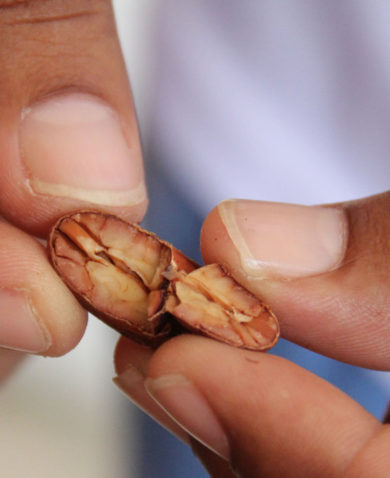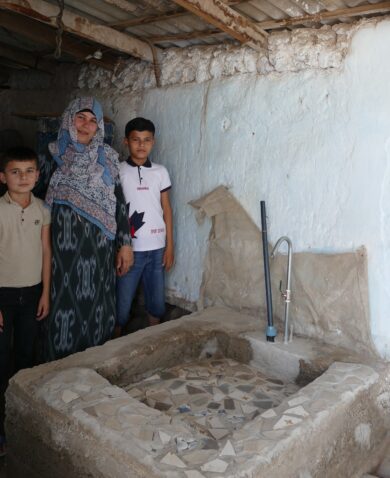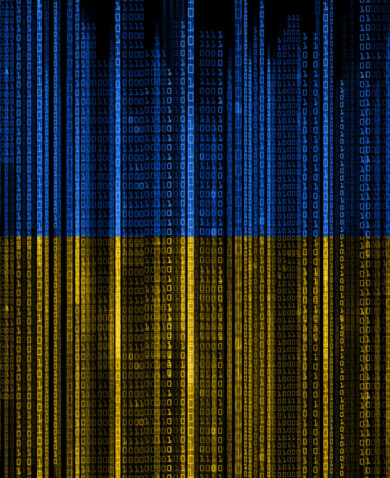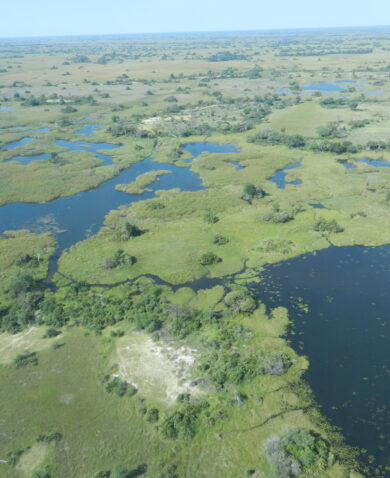
Navigating Enterprise-Destroying Pitfalls in SME Assistance
February 1, 2022 | 5 Minute ReadJafar Shami and Daniel Kim share three common pitfalls when delivering assistance to SMEs and in response, offer actionable solutions and tools to support inclusive and sustainable economic growth.
The elusive quest for economic growth is one of much trial and error. Its complexity is multiplied when considering the concurrent goals of resilience, inclusion, sustainability, and being broad-based and private-sector led. Forming an evidence-based and multi-sectoral strategy tackling this very problem is the herculean task that USAID’s latest economic growth policy faces.
Even with a great strategy in place, the challenges to driving development led by small and medium-sized enterprises (SMEs) on the ground are multifarious. With an eye on the prized goal of “impact” and hands busy steering from the helm, project leadership must flexibly and rapidly deliver assistance to individual SMEs. Often this assistance is provided under compressed timelines, where mistakes are inevitable.
Leveraging Chemonics’ deep economic growth expertise with the principles laid out in USAID’s economic growth policy, we share a cautionary tale of three common pitfalls and offer actionable solutions and tools in response.
Pitfall 1: Overinvestment
The dual engines powering internal SME productivity are human and physical capital, which includes technology and innovation. When finance is limited in a developing economy, which is often the case, projects can help SMEs by unclogging critical flows in the investment pipeline. However, as projects strive to meet this need, they may find themselves in the first pitfall: unintentionally overinvesting in one capital over another. Without achieving a proper balance between labor and physical capital, projects risk overloading and pushing the business to manage new investment beyond the business’ means without the proper capacity. Firms may face increasing costs without necessarily generating additional profits, ironically reducing competitiveness and resulting in greater firm exit.
Solutions: To achieve an optimal balance, assistance must be bespoke, fitting the exact need of the enterprise. Many of Chemonics’ economic growth projects apply the buyer-led approach (BLA), which leads to demand-driven solutions that address discrete business problems and right-size the firm assistance package. This is done by identifying a specific buyer in the final market, whether domestic or international, that represents credible demand for a product or a service. The binding constraints that prevent the client firm from meeting this demand are resolved, one by one, through customized assistance. For instance, the Chemonics-implemented USAID Lebanon Enterprise Development (LED) project heavily relies on BLA to identify Lebanese SMEs with demonstrated market opportunities and growth potential. Even amidst a difficult operating environment mired in social, economic, and political crises, the program closely works and cost-shares with their client SMEs to provide tailored assistance, ranging from management consulting to equipment purchases, along with user training and maintenance support. This approach ensures that the assistance is cost-effective, attenuating the risk of overinvestment and maximizing developmental returns to American taxpayer money.
Pitfall 2: Importing Context-Detached Solutions
Quality inputs drive production of quality goods and services: labor with complementary skills, energy, machinery, IT systems, access to finance, infrastructure, raw materials, among many others — all under the umbrella of a business-enabling environment ensuring security, rule of law, and property rights. The availability of these inputs significantly varies from one market context to another, which yields different results and challenges. A simple, often-forgotten pitfall is this: Development practitioners must never assume what worked in one project will work in another.
For example, when launching the economic growth activities of the USAID Durable Communities and Economic Opportunities (DCEO/Tahfeez) in Iraq, the project encountered challenges that radically differed from any other project implemented in the region. The private sector was critically underfinanced from years of conflict. According to the World Bank, only 2.7% of Iraqi firms have financed investment projects through bank loans compared with an average of 23.7% in MENA. Iraqi enterprises had no access to common SME lending found in similar countries and found themselves unable to procure capital equipment essential for growth. It was impossible to simply plug-and-play a “best practice” when so many of the conditions were unique.
Solutions: Rather than imposing a top-down “best practice,” DCEO engaged the rich local private sector ecosystem from an early stage, including SMEs, banks, associations, and multinational companies. These established market players illuminated key pain points and priorities — all from a hyper-local perspective — allowing the project to co-create a best fit for the assistance, which ranged from procuring state-of-the-art printing machinery to complex technical training. Similarly, for the USAID Tunisia Jobs, Opportunities & Business Success (JOBS) project, potential project assistance must be analytically justified through a pre-feasibility assessment that evaluates a client firm’s operational model and financial health in light of the robustness of its growth plans, identified obstacles, and other market assumptions. The results show: To date, more than 25,000 companies have received assistance, generating more than 35,000 new jobs (of which 60% are for women) and catalyzing over $200 million in additional financing.
Pitfall 3: The Sustainability Paradox
Inclusive, broad-based growth is the cornerstone of USAID’s economic growth policy and a critical enabler for economic resilience, sustainability, and social cohesion. It is imperative that projects help reduce barriers to economic participation. But that doesn’t excuse “lowering the bar” in evaluating solid business fundamentals and promising business plans when selecting SMEs to assist. Lowering the bar can lead to the final pitfall: By compromising, projects may be at risk of subsidizing to perpetuity and impeding the long-run goal of building true self-financing partners. It also interferes with the dynamism of a market-based economy that sifts through entrepreneurs based on experimentation and the best business ideas.
Solutions: By allowing the market to work — rather than distorting it — projects can focus on developing the right-sized assistance package that can achieve additional, incentive-driven, and inclusive SME growth for the right candidates. Beyond physical capital and workforce know-how, projects must consider the breadth and depth of a firm’s overall management expertise. For instance, Tunisia JOBS’ pre-feasibility assessments identify management as a key factor in their evaluation criteria, holistically assessing owners’ education, professional experience, vision, and capacity to carry out proposed solutions. Projects can incentivize further management strengthening by using pay-for-results instruments, such as fixed amount awards, to anchor assistance with measurable, verifiable results and milestones, while minimizing the risk to the program. To the extent possible, projects must tap local expertise and supportive market actors for SMEs to engage these services on their own without donor assistance.
Conclusion
Good intentions are not good enough to drive economic growth. To survive and thrive each day, SMEs must weigh complex decision points, execute strategies amidst ambiguity, and maintain essential systems. These challenges compound for vulnerable groups and those operating in fragile situations. Sustainable, firm-level solutions depend on the scope and time horizon of project priorities, whether they are at the enterprise or sector level. While the two are mutually reinforcing, the range of assistance options and delivery methods vary significantly based on priority. To truly unlock inclusive, resilient, and sustainable growth, economic growth projects must make every development dollar count, adhering to principles of:
1.Diligence in assessing a client SME’s business model
2.Forming genuine partnerships with growth-oriented SMEs
3.Early engagement with local market players and co-creating bespoke solutions
Adhering to these principles will help maximize the return on project assistance, upholding obligations to partner firms and remaining accountable to the American taxpayer by producing lasting results.
Banner Image Caption: Talal Mohammed runs a well-known plant nursery in Mosul that he rebuilt by hand after it was destroyed during the ISIS conflict. The USAID Durable Communities and Economic Opportunities (DCEO/Tahfeez) project provided Talal with equipment, including flowerpots and gardening tools, which is helping Talal grow his business and help bring life back to his neighborhood.
Posts on the blog represent the views of the authors and do not necessarily represent the views of Chemonics.














































